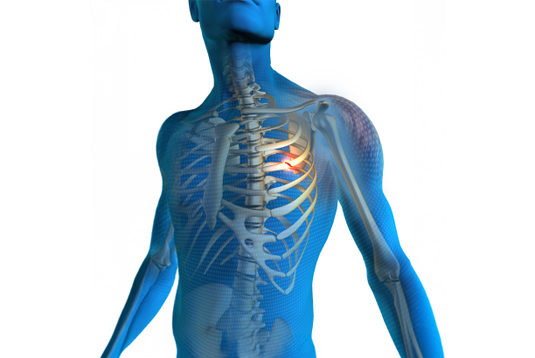
Last week, Houston Astros shortstop Jeremy Peña took a pitch to the side during a game against the Chicago Cubs.
Though initial X-rays appeared negative, Peña continued to feel pain.
Days later, an MRI and CT scan revealed what many athletes and active individuals fear: a rib fracture.
He was placed on the 10-day injured list, a frustrating but necessary pause to allow proper healing.
As a sports medicine physician in Houston, I often see similar injuries in patients ranging from weekend warriors to high school athletes. Peña’s case is a great example of why rib fractures can be difficult to diagnose and why recovery timelines need to be handled carefully.
What Is a Rib Fracture?
Rib fractures typically result from direct trauma, like a fall, collision, or as in Peña’s case, a baseball to the torso.
The rib cage protects vital organs, but the bones are still vulnerable to breaks.
Symptoms often include:
- Sharp pain with deep breathing or coughing
- Pain with twisting or torso movement
- Tenderness at the point of impact
How Rib Fractures Are Diagnosed
In my clinic, we typically start with X-rays. They can catch obvious fractures, but they don’t always detect smaller cracks, especially early on. If symptoms persist but X-rays look normal, I often order advanced imaging:
- MRI helps identify soft tissue inflammation or hidden stress injuries.
- CT scans provide detailed bone imaging to confirm even subtle fractures.
That’s exactly what happened with Peña. His initial imaging was clean, but continued pain prompted further testing - and the rib fracture showed up. This is a reminder that clinical symptoms should guide imaging decisions, not just initial results.
Treatment and Recovery Timeline
Rib fractures generally don’t require surgery.
The focus is on rest, pain management, and gradual return to activity.
Typical recovery includes:
- Weeks 1–2: Pain control with acetaminophen or NSAIDs, ice, and limited activity.
- Weeks 2–4: Gentle mobility, breathing exercises to prevent lung complications.
- Weeks 4–6: Progressive return to movement or sport-specific training.
- Weeks 6–8: Full return to play if pain-free.
For pro athletes like Peña, recovery is closely monitored. On average, MLB players with rib fractures miss about 4–5 weeks, depending on severity and pain tolerance.
For recreational athletes or active adults, the timeline can be similar but requires caution to avoid re-injury.
Why This Matters for Patients
If you’ve experienced chest trauma or persistent rib pain after an injury, even if your first X-ray was “normal”, don’t brush it off.
At our clinic, we take these symptoms seriously. A missed rib fracture can delay healing or lead to complications like pneumothorax (collapsed lung) or chronic pain.
We offer same-week appointments, advanced imaging referrals, and personalized recovery plans to help you return to work, sport, or daily activity safely.
Jeremy Peña’s injury is a great reminder: Trust your body, not just the first test result.
Rib fractures need time, proper diagnosis, and tailored care.
If you’re dealing with chest pain after a fall or impact, schedule an evaluation.
We will help you breathe easier and heal faster.











